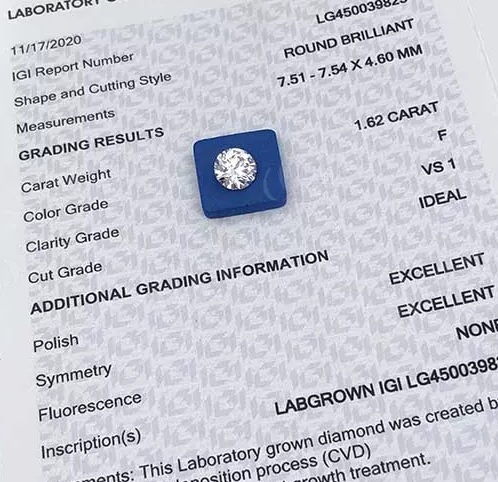Diamonds have long been revered for their exquisite beauty and allure. Traditionally, diamonds were formed deep within the Earth over millions of years, creating a sense of rarity and exclusivity. However, in recent years, a revolutionary breakthrough in the field of gemstone technology has emerged: lab-grown diamonds. These diamonds, created through advanced scientific processes in controlled laboratory environments, are reshaping the jewelry industry and captivating the hearts of consumers worldwide. In this article, we will explore the fascinating world of lab-grown diamonds, their creation process, and their impact on the jewelry market.
Lab-grown diamonds, also known as synthetic or cultured diamonds, are produced using high-pressure, high-temperature (HPHT) or chemical vapor deposition (CVD) techniques. These methods mimic the natural conditions under which diamonds are formed in the Earth’s crust, but in a much shorter time frame. By recreating the environment necessary for diamond growth, scientists can accelerate the process and create diamonds in a matter of weeks or months.
The technology behind lab-grown diamonds is truly groundbreaking. Through meticulous control of temperature, pressure, and chemical composition, scientists are able to replicate the natural diamond-growing process. In the HPHT method, a tiny diamond seed is placed in a chamber containing carbon-rich gases and subjected to intense heat and pressure. Over time, the carbon atoms attach to the seed and crystallize, gradually growing into a complete diamond. CVD, on the other hand, involves the use of a hydrocarbon gas that is broken down and deposited layer by layer onto a diamond seed, resulting in the growth of a larger diamond.

One of the most remarkable aspects of lab-grown diamonds is their physical and chemical composition, which is indistinguishable from natural diamonds. They possess the same brilliance, hardness, and optical properties, making them visually and structurally identical to their mined counterparts. lab made diamonds for sale.In fact, even experts with specialized equipment find it challenging to differentiate between lab-grown and natural diamonds without extensive testing.
The rise of lab-grown diamonds has had a significant impact on the jewelry market. These diamonds offer consumers a more affordable alternative to natural diamonds, as their production costs are generally lower. Additionally, lab-grown diamonds are considered more environmentally friendly, as they require fewer resources and do not involve the destructive mining practices associated with natural diamond extraction. This makes them an attractive choice for ethically conscious consumers who prioritize sustainability.
Moreover, lab-grown diamonds provide an opportunity for customization and creativity in jewelry design. Their availability in a range of colors and sizes allows jewelers and consumers to explore new and unique designs that were once limited by the scarcity of natural colored diamonds. Lab-grown diamonds also offer a consistent supply, reducing the reliance on unpredictable mining operations and ensuring a stable source of gemstones for the industry.
It is important to note that the emergence of lab-grown diamonds does not diminish the value or desirability of natural diamonds. Natural diamonds hold a timeless allure and continue to be cherished for their rarity and history. However, lab-grown diamonds provide an alternative that aligns with evolving consumer preferences and values.
In conclusion, the development of lab-grown diamonds represents a revolutionary milestone in the world of gemstones. These marvels of modern science offer a sustainable, customizable, and affordable option for consumers while maintaining the remarkable beauty and properties of natural diamonds. As technology continues to advance, lab-grown diamonds are poised to shape the future of the jewelry industry, captivating the hearts of individuals who seek both magnificence and sustainability in their precious gems.